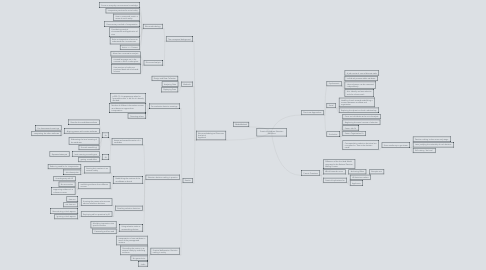
1. Dominate Approaches
1.1. Psychometric
1.1.1. A job consits of a set of discrete tasks
1.1.2. Individuals possess stable attributes
1.1.3. Job and person can be measured independently
1.1.4. Aim: Identify and test selection tools for a best match
1.2. Social
1.2.1. Usability of tools towards establishing a contract between candidate and organization
1.2.2. Exploring the dynamics of such relationshop
1.3. Similarities
1.3.1. Focus on individuals as the unit of analysis
1.3.2. Neglecting the social context of selection
1.3.3. Person Job Fit
1.3.4. Person Organization Fit
1.3.5. Conceptualizing selection decisions but no answer for "how is the decision made"
1.3.5.1. Some studies try to get closer
1.3.5.1.1. Decision making is done at an early stage
1.3.5.1.2. Later justifying the rationality of such decision
1.3.5.1.3. Still missing "the how"
2. Ethnomethodological-Discourse Analytical Approach
2.1. The conceptual background
2.1.1. Ethnomethodology
2.1.1.1. Focus on everyday commonsense knowledge
2.1.1.2. Intrepretive practices for social reality
2.1.1.3. How to create and sustain a sense of social reality
2.1.1.4. Documentary method of interpretation
2.1.1.5. Considering practical circumstances and Application of rules
2.1.1.6. Rules as interpretive schemes to understand the circumstances
2.1.1.7. Action <-> Context
2.1.2. Discourse Analysis
2.1.2.1. More than conversation analysis
2.1.2.2. situated language use in the contexts in which it takes place
2.1.2.3. How versions of reality are produced dealt with and made relevant
2.2. Methods
2.2.1. Design and Data Collection
2.2.2. Analysing Data
2.2.3. Displaying Data
2.3. Results
2.3.1. Four selection decision meetings
2.3.1.1. p.295 /15: his appearance when he opened the door. it felt like it's already decided...
2.3.1.2. Number of different information sources as evidence to support their interpretation
2.3.1.3. Outvoting others
2.3.2. Selection decision making in practice
2.3.2.1. Assess and assemble version of a candidate
2.3.2.1.1. IA
2.3.2.1.2. ID
2.3.2.2. Establishing the versions of the candidates as factual
2.3.2.2.1. Rooting their versions in an external reality
2.3.2.2.2. mobilizing evidence from different sources
2.3.2.3. Reaching selection decisions
2.3.2.3.1. Knowing the person selectors see obvious selection decisions
2.3.2.3.2. Employing ad hoc practices by ID
2.3.2.4. Using selection tools as sensemaking devices
2.3.2.4.1. Moulding impressions into specific versions
2.3.2.4.2. Personality profiles used
2.3.3. Practical deliberation: Decision making in reality
2.3.3.1. Interpretation of new attributes in terms of the presupposed versions
2.3.3.2. Grounding the version in an external reality by mobilizing evidence
2.3.3.3. No general rule
2.3.3.4. Linkin
3. Central Questions
3.1. Difference of the the Used Model compared to the Rational Decision Making Process.
3.2. Which biases do occur
3.2.1. Anchoring Effect
3.2.1.1. Example one
3.3. Practical Implications for
3.3.1. HR decisions makers
3.3.2. Applicants
